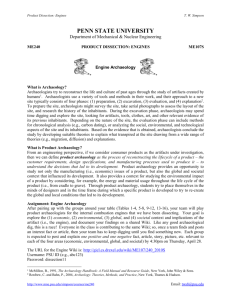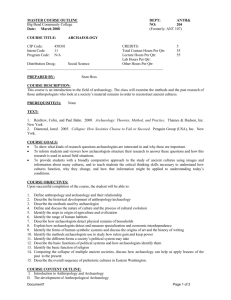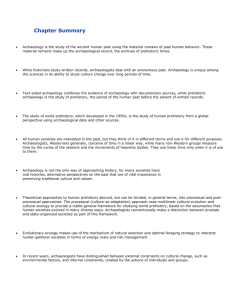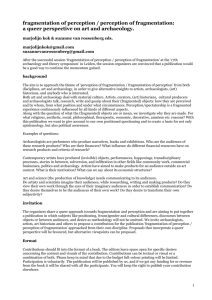Bicycle Archaeology - Product Archaeology
advertisement
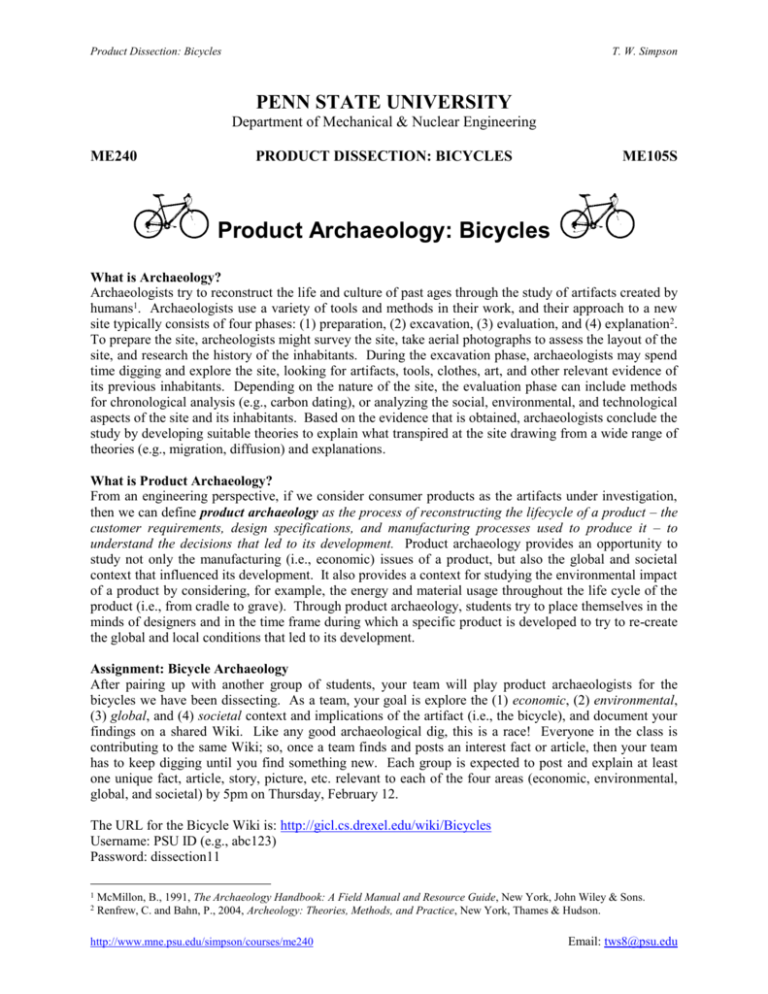
Product Dissection: Bicycles T. W. Simpson PENN STATE UNIVERSITY Department of Mechanical & Nuclear Engineering ME240 PRODUCT DISSECTION: BICYCLES ME105S Product Archaeology: Bicycles What is Archaeology? Archaeologists try to reconstruct the life and culture of past ages through the study of artifacts created by humans1. Archaeologists use a variety of tools and methods in their work, and their approach to a new site typically consists of four phases: (1) preparation, (2) excavation, (3) evaluation, and (4) explanation2. To prepare the site, archeologists might survey the site, take aerial photographs to assess the layout of the site, and research the history of the inhabitants. During the excavation phase, archaeologists may spend time digging and explore the site, looking for artifacts, tools, clothes, art, and other relevant evidence of its previous inhabitants. Depending on the nature of the site, the evaluation phase can include methods for chronological analysis (e.g., carbon dating), or analyzing the social, environmental, and technological aspects of the site and its inhabitants. Based on the evidence that is obtained, archaeologists conclude the study by developing suitable theories to explain what transpired at the site drawing from a wide range of theories (e.g., migration, diffusion) and explanations. What is Product Archaeology? From an engineering perspective, if we consider consumer products as the artifacts under investigation, then we can define product archaeology as the process of reconstructing the lifecycle of a product – the customer requirements, design specifications, and manufacturing processes used to produce it – to understand the decisions that led to its development. Product archaeology provides an opportunity to study not only the manufacturing (i.e., economic) issues of a product, but also the global and societal context that influenced its development. It also provides a context for studying the environmental impact of a product by considering, for example, the energy and material usage throughout the life cycle of the product (i.e., from cradle to grave). Through product archaeology, students try to place themselves in the minds of designers and in the time frame during which a specific product is developed to try to re-create the global and local conditions that led to its development. Assignment: Bicycle Archaeology After pairing up with another group of students, your team will play product archaeologists for the bicycles we have been dissecting. As a team, your goal is explore the (1) economic, (2) environmental, (3) global, and (4) societal context and implications of the artifact (i.e., the bicycle), and document your findings on a shared Wiki. Like any good archaeological dig, this is a race! Everyone in the class is contributing to the same Wiki; so, once a team finds and posts an interest fact or article, then your team has to keep digging until you find something new. Each group is expected to post and explain at least one unique fact, article, story, picture, etc. relevant to each of the four areas (economic, environmental, global, and societal) by 5pm on Thursday, February 12. The URL for the Bicycle Wiki is: http://gicl.cs.drexel.edu/wiki/Bicycles Username: PSU ID (e.g., abc123) Password: dissection11 1 2 McMillon, B., 1991, The Archaeology Handbook: A Field Manual and Resource Guide, New York, John Wiley & Sons. Renfrew, C. and Bahn, P., 2004, Archeology: Theories, Methods, and Practice, New York, Thames & Hudson. http://www.mne.psu.edu/simpson/courses/me240 Email: tws8@psu.edu
